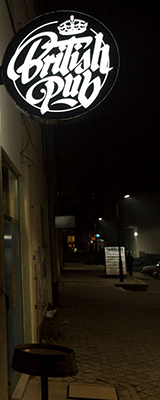Ciscenje bakra (chiller)
Vecina nas ima bakarne chillere pa posto se na mom pojavio zeleni oksid (male tackice tu i tamo), potrazio sam na netu kako da ocistim. Sto se tice bakra, taj zeleni oksid ga stiti do dalje oksidacije, ali kako citam on je stetan i treba ga ocistiti. Chiller nakon toga treba posle svakog hladjenja dobro oprati i to je to.
Evo sta John Palmer kaze:
Cleaning Copper
For routine cleaning of copper and other metals, percarbonate-based cleaners like PBW are the best choice. For heavily oxidized conditions, acetic acid is very effective, especially when hot. Acetic acid is available in grocery stores as white distilled vinegar at a standard concentration of 5% acetic acid by volume. It is important to use only white distilled vinegar as opposed to cider or wine vinegar because these other types may contain live acetobacteria cultures, which are the last thing you want in your beer.
Brewers who use immersion wort chillers are always surprised how bright and shiny the chiller is the first time it comes out of the wort. If the chiller wasn't bright and shiny when it went into the wort, guess where the grime and oxides ended up? Yep, in your beer. The oxides of copper are more readily dissolved by the mildly acidic wort than is the copper itself. By cleaning copper tubing with acetic acid once before the first use and rinsing with water immediately after each use, the copper will remain clean with no oxide or wort deposits that could harbor bacteria. Cleaning copper with vinegar should only occasionally be necessary.
The best sanitizer for counterflow wort chillers is Star San'. It is acidic and can be used to clean copper as well as sanitize. Star San can be left in the chiller overnight to soak-clean the inside.
Cleaning and sanitizing copper with bleach solutions is not recommended. The chlorine and hypochlorites in bleach cause oxidation and blackening of copper and brass. If the oxides come in contact with the mildly acidic wort, the oxides will quickly dissolve, possibly exposing yeast to unhealthy levels of copper during fermentation.
(
http://www.howtobrew.com/section1/chapter2-2-2.html)


























































